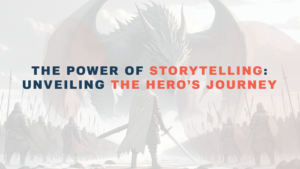The 3-Step Formula for Every Story
(Storytelling Training for Ministries with Examples & Templates)
Stories have the power to transform and define a life, and to alter society, but many times a well-intended story either causes a headache or falls flat. In this article, we will share a simple, three-step structure to share stories that will help your ministry thrive and testify to all that God is doing.
We will begin with an explanation why story structure is important and how to avoid writing painful and flat stories. Then, we will adapt it to use for marketing your ministry in digital. Last, we’ll provide free downloads, including templates and a case-use scenario matrix.
Why is Structure Important?
When was the last time you got (or gave) storytelling whiplash from a story that jumped around? We all do it, even though we know how painful it is. Let’s begin with how to write a story that causes a headache in less than one hundred words:
Yesterday I went to the mall to get a new pair of shoes because I was hiking last week. A few years ago, when I went on vacation to Orlando, I got really nice hiking shoes right after I saw a show on the second day so I could walk around the park all day. They were my favorite shoes, but now breaking in a new pair of shoes is the worst. Last week I noticed the soles were getting bare and I wore my new pair all day today.
By definition, a story is content consisting of elements such as character, setting, conflict, and structure where the purpose is to inspire the audience. If the content contains all elements, but its purpose is anything other than to inspire the audience, then the content is likely educational, such as a news report, a Bible Study, or a how-to article.
If any element is missing from the content, it’s not a story. It might be a different type of work. For example, content without conflict or transformation might actually be an informational announcement. However, inspirational content with all story elements except structure is just a mess.
Storytelling whiplash happens when the structure is out of order. We intuitively start a story at the beginning and finish with the end, so we typically don’t think about how a narrative is arranged until we hear a jerky story. Skilled storytellers use techniques like flashbacks and flashforwards to build suspense, but it must be done right to make sure the audience doesn’t get confused.
The most inspiring, memorable, and impactful story structure is the Hero’s Journey, which says that a character with a problem meets a guide who has a plan and calls them into action. The character accepts the plan and overcomes all obstacles to solve their problem.
3 Steps to Avoid Storytelling Whiplash
Filmmakers across time and space simplify the Hero’s Journey to a three-act structure: problem, solution, result.
- Problem
The story begins with a character who has a problem.
- Solution
The solution is the journey from the problem to the result. This is the part of the story where your character meets a guide who has a plan and calls them into action. The character accepts the plan and overcomes all obstacles.
- Result
Describe the result of the solution. Explain what success looked like when the character’s problem was solved.
Many stories spare the reader whiplash by following the three-act structure, but instead the story goes nowhere, so it leaves the reader flat. It feels like the story took a sharp turn somewhere and the audience has no idea how they got there.
Storytelling Flats
When a story starts wrong or changes direction part way through, then either the story doesn’t relate, or the result has nothing to do with the problem or the solution.
We will illustrate storytelling flats with a comical scene from an episode of the Paramount+ series, 1923. The Dutton ranchers and their wives were spending a sunny afternoon in the city to stock up on supplies. As they hitched the horses in front of a store, a salesman tried to sell them an invention called, “the washing machine.” The exchange between the salesman and the ranchers went something like this.
Salesman, with big toothy smile and arms waving: “It’s the wave of the future! It will wash your clothes for you!”
Rancher’s wife, hands firmly planted on her hips: “And just why would I need a machine to wash my clothes for me?”
Salesman, as though holding candy in front of a child: “So you can do other things!”
Rancher, smelling a scam: “What other things?”
Salesman, sure he’s got this simpleton and his wife hooked: “Go on a holiday, enjoy a more leisurely life!”
Rancher neither knows nor cares about leisure but decides to play along for fun: “No, kidding! So how does it work?”
Salesman, hops a step closer, talks a bit faster: “You get electricity hooked up to your house, plug it in, throw the clothes in this here machine, oh- and make sure you’ve got indoor plumbing, then just add soap, turn these dials, and off you go!”
Rancher and his wife turn to look at one another in silence.
Rancher, smirking in anticipation of putting a muzzle on another soft-handed city slicker: “I won’t have time for a leisurely life! I’ll have to work more to pay for the machine and all the electricity and plumbing to run it!”
Rancher puts his arm around his wife’s shoulders as the two giggle their way past the storefront, leaving the tongue-tied salesman with his arms hanging at his side.
The salesman tried to show the ranchers how the machine can improve their life story. He started with a common problem (dirty clothes), provided a solution (washing machine), and described the result (leisure time). But he left his audience flat every step of the way. Here are three ways to make sure you don’t leave your readers stuck with a flat story.
Problem isn’t Relatable
The salesman didn’t relate to the ranchers. He seemed to know nothing about them or the problems they face every day. He thought the benefit of a machine that will wash your clothes for you was evident because it solved the problem of cleaning dirty clothes. But the wife took pride in solving her family’s dirty clothes problem, so she could not see how a washing machine would help her.
Either the character or the problem must be relatable to the audience. God wired us for story, so a relatable story instinctively triggers several ripple effects.
First, the audience will see themselves in the story. When they see themselves in the story, they bond with the character, which then establishes an emotional investment. Because the audience is emotionally invested, the problem creates tension that must be resolved, and you now have their attention.
Think of the emotional investment and the tension as two sides of a pliers that grabs the audience’s attention. The two sides of the pliers are held together by the relatable character or problem, but without that bond, the story has no grip.
Solution isn’t Simple
When asked how the machine worked, the salesman told the entire story. That was the problem, he said too much. The salesman should have explained that after you add soap, you turn two knobs. In that moment, the rancher didn’t need to know all of the prerequisites.
Don’t lose the audience with details. To find the balance between clarity and simplicity, determine why you are writing and exclude details that don’t speak to your message. Save the ancillary details for a different piece or another day.
Success isn’t Relevant
The salesman in 1923 shared his version of success, but it was irrelevant to the ranchers’ problems or their vision for a better life. The rancher’s dirty clothes problem was already solved, and they didn’t see how their life would be better with a fancy, new washing machine. Perhaps if the salesman told the ranchers how the machine would help the ranch run better, they may have been more interested.
The scene took me back to my days in sales training where we learned about the WIIFM—What’s In It For Me. The WIFFM is what every customer needs to know before opening their wallet.
Whether you are selling a product or service, asking for donations, or entertaining, you have to show your audience how life is different as a result of the solution to their problem. You can’t just show what the product or experience is or does, you have to show how that experience or product impacts their life.
With that in mind, I’d like to show you how the problem, solution, result story structure applies to ministry marketing in digital.
Adaptation for Ministry
Zach Leighton, Reliant Creative’s StoryBrand certified guide, adapted the Hero’s Journey for ministries to use in digital. The Hero’s Journey story structure for ministries broken down in problem, solution, result, goes like this:
1. Problem
Your potential partners and participants struggle with the issues of living in a sinful, fallen world.
2. Solution
Your ministry is there to guide them. Through your messaging, outreach, and marketing efforts, you invite your partners and participants into a journey through the wilderness. In accepting the call, you all follow God’s plan for your lives. Together, you put on the full armor of God to fight the good fight, where the war has already been won.
3. Result
As a result, everyone experiences varying measures of freedom by living in obedience to God and His Word. And the story continues on repeat as Christ continues to sanctify us throughout our life.
If you’ve taken our Story Driven Messaging course, you will recognize the definition and graphic as the Partner & Participant Journey.
Robert McKee, also known as “the Aristotle of our time” defines story in three words: “Conflict changes life.” Conflict is the problem, change is the solution, and new life is the result.
What could possibly be more relevant to Christians?
Within the Christian ministry and church space, the simplest definition of a story is death to life transformation through Christ, the conflict is sin, the change is transformation through Christ, and the new life is freedom and continued sanctification.
In ministry, we need our stories to carry values and transform lives, but your story can still feel stale even if you include the sin, the transformation, and the new-found freedom. Next, we’ll share three ways to bring out the impact in each section of the story.
Transformative Storytelling
Throughout the Bible, there’s constant tension through conflicts and challenges because of sin, followed by God transforming His children into a new life with Him. This is the story of our lives, the rhythm in which we live over and over again. Each of us who calls ourselves followers of Christ has gone through this process because we share in His death and resurrection.
To turn it into a story a person can hang their heart on, you need to emphasize the tension, movement, and transformation. Here are three ways to move the heaviest heart through story.
Problem
In ministry, we deal not only with the external problem, but also with the internal condition of the heart and soul, all while we wrestle with larger, philosophical issues.
To increase the tension and the bond between your character and your reader, zoom out to include more than the external layer of the problem.
For example, if your ministry helps alcoholics, then your program participant is dealing with drunkenness, the emotional turmoil that pushed them to drink, as well as unforgiveness, guilt, shame, and distance from God.
You may not always include all three layers as you increase the conflict but go a little deeper than the obvious.
Solution
Just like the problem is multi-layered, so is the transformation. For example, not only does your participant have to get sober, but they also have to deal with the trauma that made them drink in the first place. They also have to seek forgiveness from the people they hurt, they have to forgive themselves, and they have to surrender their heart to Jesus.
For every ministry program participant, healing starts with repentance and surrender at the cross, so the story will focus on God and your participant. You are not the hero. Your ministry is a guide to help bring the participant to Jesus.
Result
There’s incredible power in a story of a life transformed by God, but many people miss the important piece of new life and continued growth.
Most Christians can tell you their conversion story, but God doesn’t stop there. Our lives are a continual, repeat of sin, transformation, and sanctification as we lean on Jesus and grow to be more like Him every day.
For example, success means that the alcoholic is now sober, relationships are on the mend, and they are learning to forgive themselves and lean on Jesus more every day. All these things continue on a path of growth, a new life through Christ, and a hope for the future.
The end of the story is more than the absence of conflict. Freedom through Christ is about the obedience and peace that replace sin and death.
Putting It Together
We’ve covered a lot of information, so now we will provide an example and free tools to help you implement what you’ve learned and share more testimonies of God’s work through your ministry.
Example
First, we have provided a before and after story scenario. The before version is a mix of storytelling whiplash and flats. The story is out of order and incomplete. The after version is in order and includes increased tension, multi-layered transformations, and continued sanctification in a life transformed by God, all in 206 words.
| Before: Out of order, incomplete | After: Arranged by problem-solution-result |
| God freed me from guilt and shame. He responded with love and guided me through the recovery process. Despite feeling disconnected from Him, I asked for His help. He gradually softened my heart and I heard His voice again. Seeking support, I faced silence, so I turned away from God and fell into destructive behaviors. With His strength, I persevered. By His grace, I am experiencing freedom, peace, and joy. His help was not based on my actions, but on His character and grace at every step of my recovery. | Problem – Lost and weary, I faced multiple struggles and felt disconnected from God. Seeking support, I was met with silence, which led to confusion and anger. I turned away from Him, fell into drinking, and hurt my family. I was so ashamed, I felt like giving up. Solution – But God’s grace reached out to me. Gradually, I heard His voice again, softening my heart. Despite guilt and shame, I mustered the courage to ask for His help. He responded through the Water of Life ministry who love and guided me through the recovery process. In His grace, He freed me from alcohol and anxiety. I obeyed His Word and asked Him and my loved ones for forgiveness. With His strength, I persevered through the intense struggle and forgave myself. I leaned on Him when I felt weak, and He led me toward healing. Result – Today, I am a living testament to His grace, experiencing freedom, peace, and joy. His help wasn’t based on my actions but on His character and love. I am grateful for His patient listening, His unconditional love, and His guiding presence through the Water of Life program. In every step of my recovery, God showed me His grace and brought me into a new life. |
Free Downloadable Tools
Templates
We’ve created three templates, each a different variation of the problem > solution > result process, to help you write powerful, structured testimonies that inspire your audience to act. Each template has a different layout so you can use what works best for you. All of them are broken down by problem, solution, result, and then by the transformative storytelling elements discussed in this article.
Application
Last, we’ve created a case-use matrix to help you determine when and how to use these techniques depending on the content. During this article, we focused on how to apply the story structure to a participant testimony, but it works for any situation, whether you are writing engage partners, sharing a ministry update, or any other message.
| Problem-Solution-Result Ministry Case-use Scenarios | ||||
| Content Type | General | Participant Testimony | Partner Testimony | Ministry Work Feature story |
| Purpose | InspirationAwarenessGlorify GodPartner & Participant recruitment & Engagement | |||
| Audience | Partners & Participants, using holistic language | Current and potential partners | General | |
Problem–Conflict–Sin | A character has a problem | A potential participant is struggling | A potential partner shares a passion for your cause. | The ministry was not meeting a need |
Solution–Changes–Transformation | They meet a guide who gives them a plan and calls them into action | Your ministry invites them to participate in programs and services | Your ministry calls them to join you to serve out of the gifts and passion God gave them | They identified the need and overcame obstacles |
Result–Life–Sanctification | That results in Success or failure | Their life is improved, and they know Jesus better | Through obedience, they are part of something bigger than themselves and walking in their calling | To better meet the needs and spread the Gospel |
Conclusion
The 3-step formula is a timeless story structure used by successful storytellers and filmmakers around the world, so we know your ministry will thrive when you implement it into your storytelling and marketing strategy. We can’t wait to see how the structure helps you testify to all that Jesus is doing through your ministry.
To learn more about story structure and how to implement impactful stories in your marketing plan, take our free Storytelling Structures course, and read any of the following articles.
- Storytelling Training for the Lord’s Redeemed
- Elements of a Story – Storytelling Training for Ministries
- How to use Storytelling to Turn Your Mission Into a Movement
- The Definition of Story: A Storytelling Guide for Christian Nonprofits and Churches
To learn more about the power of storytelling for ministries to bring awareness to your cause, find partners and advocates, and increase your reach, contact us, book a call, or enjoy any of our free resources.







